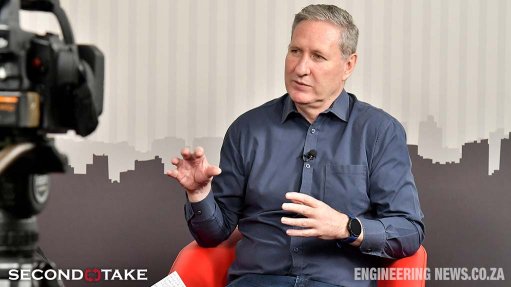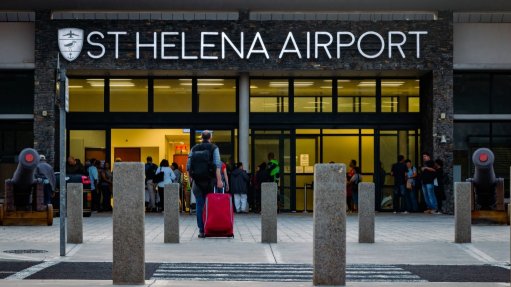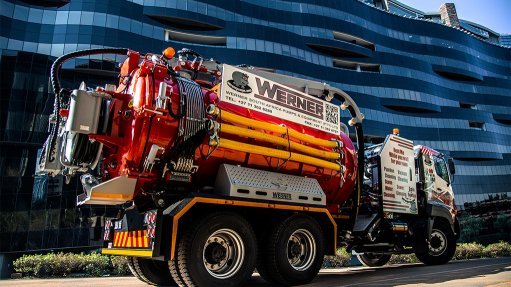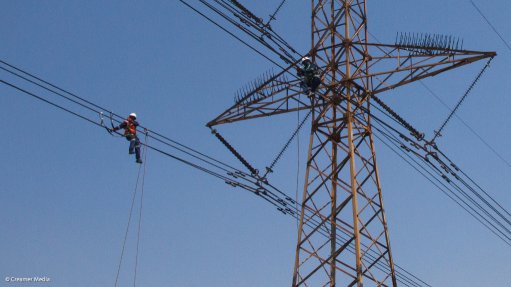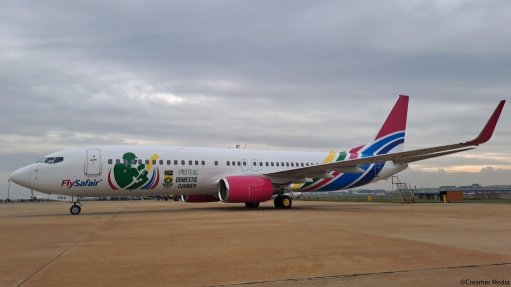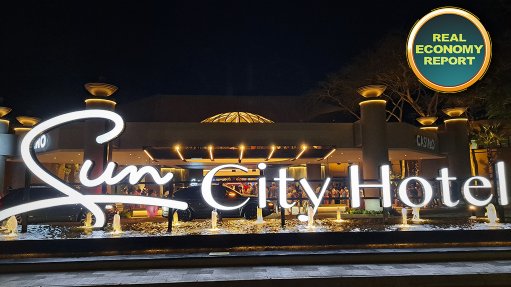Support grows for independent transmission projects to help ease grid constraint

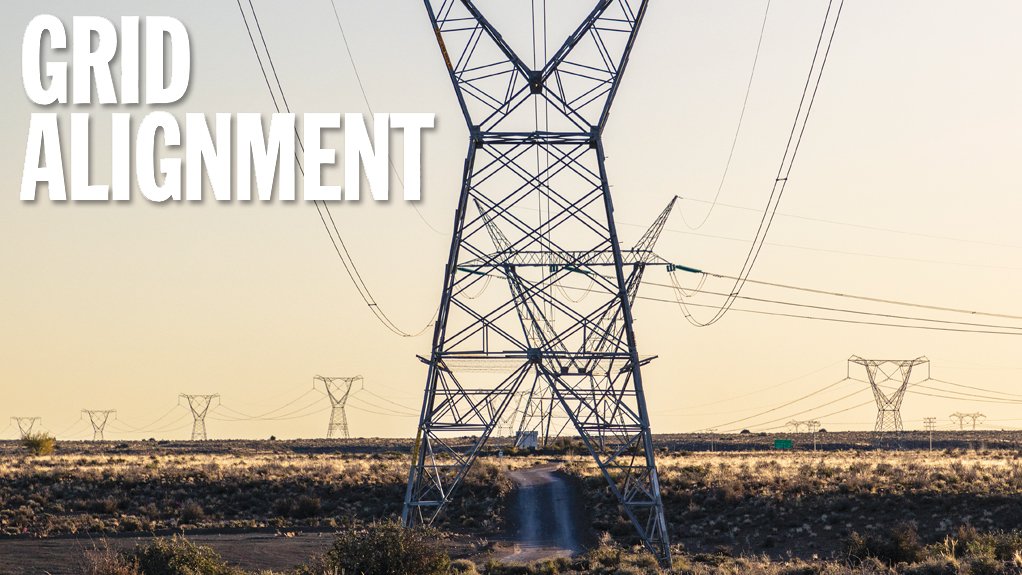
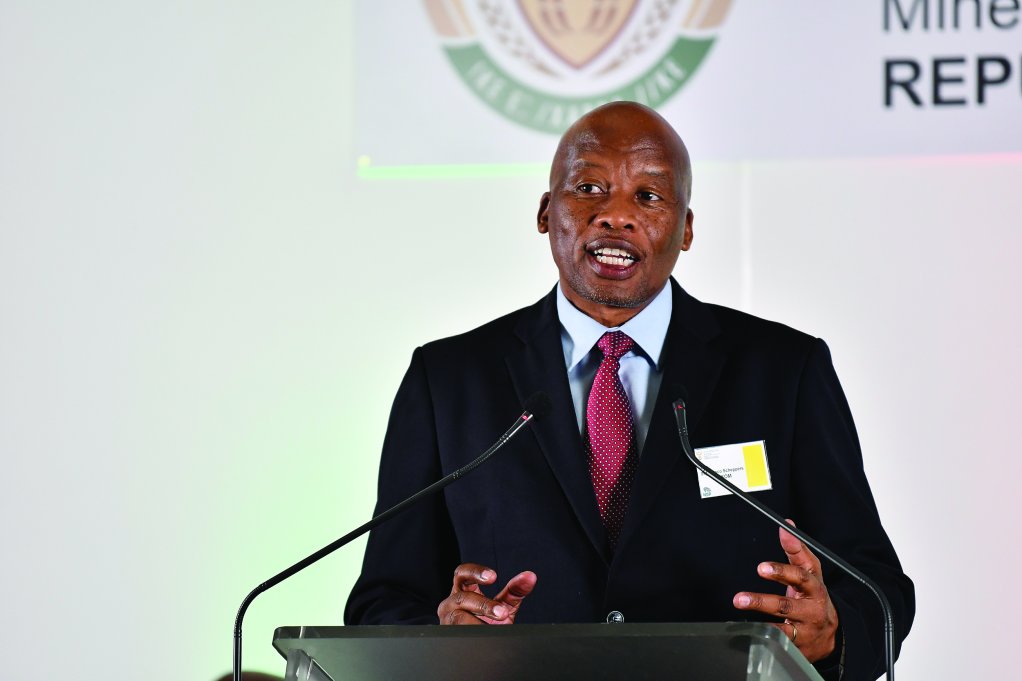
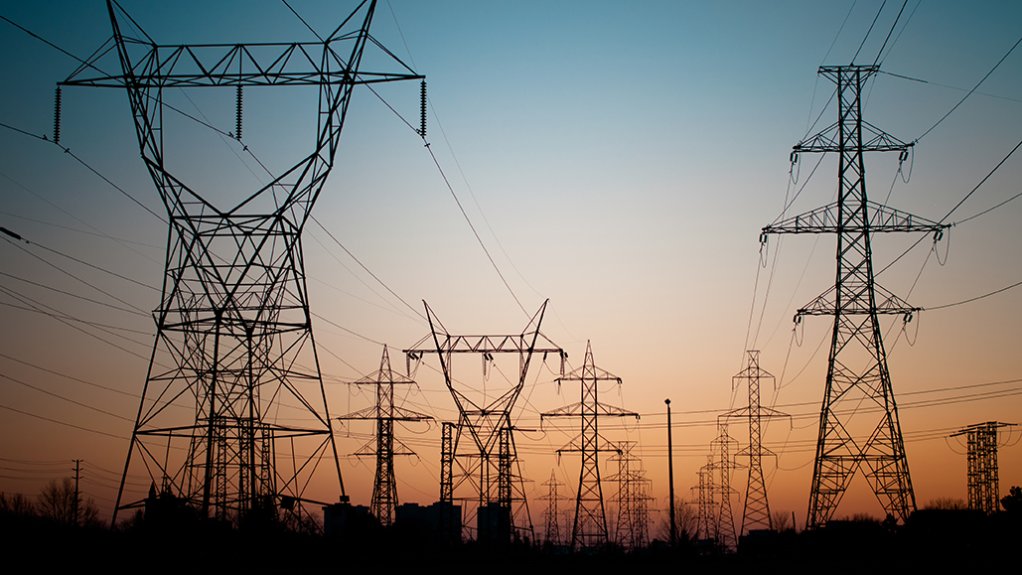
Segomoco Scheppers South Africa has already taken a big step with the unbundling of Eskom into three units
Photo by Creamer Media's Donna Slater
UP TO THE TASK While transmission infrastructure challenges are considerable, and much work lies ahead, the country has taken several steps in the right direction with supportive policies and a pipeline of projects being targeted
Photo by Adobe
South Africa’s grid infrastructure is inadequate to support economic growth and accommodate much-needed additional power, especially from renewable-energy sources coming on line as part of the country’s just energy transition.
While transmission infrastructure challenges are considerable, and much work lies ahead, the country has taken several steps in the right direction with supportive policies and a pipeline of projects being targeted.
The private sector’s investment and readiness in renewable energy makes the case for the urgent and rapid roll-out of transmission infrastructure as the backbone of the country’s energy transition, with potential to simulate economic activity through job creation and revitalise local industries.
This was highlighted by speakers during Creamer Media’s Energy Outlook 2025 webinar – Accelerating Investment in South Africa’s Transmission Network – held last month.
The country has “already taken a big step” with the unbundling of State-owned utility Eskom into three units, including the setting up of the National Transmission Company South Africa (NTCSA), which allows for the transmission network to be properly prioritised, NTCSA interim CEO Segomoco Scheppers highlighted.
South African Wind Energy Association CEO Niveshen Govender pointed out that positive steps include the crafting of an “attractive” transmission development plan (TDP) by the NTCSA last year, which outlines the entity’s ten-year vision to 2035 for transmission, aligned to national imperatives.
Scheppers said that, with plans now in place, preparatory work to get the projects to investment readiness is under way.
The TDP is expected to strengthen the transmission network, outlining the construction of about 14 000 km of transmission lines and supporting grid infrastructure over the next decade.
However, the NTCSA’s line construction capacity is about 800 km/y – below the estimate of a required 1 400 km/y, and below the country’s potential to peak at about 2 700 km/y, Govender pointed out.
While the TDP is ambitious, the challenges in construction, supply chain, capacity, statutory approvals and investment will hamper the rate at which transmission is rolled out.
“To attract investment, and accelerate transmission roll-out, we see that government, in consultation with industry stakeholders, is . . . exploring the adopting of independent transmission projects (ITPs), with a pilot tender programme earmarked to be issued in the third quarter of this year,” he added.
ITPs would also enable government to share the risks associated with construction and maintenance of transmission infrastructure with the private sector.
In December last year, government launched the request for information (RFI), the first step towards the floating of the ITP pilot tender. The RFI aims to gauge stakeholder readiness and interest, and to expedite the implementation of the TDP.
Independent Power Producer Office head Bernard Magoro called on stakeholders to participate in the RFI, which closes on February 28.
Development Bank of Southern Africa (DBSA) Transacting (Infrastructure Deal Execution) group executive Mpho Mokwele averred that the RFI will help with finalising transmission investment models, ensuring that they are bankable and underpinned by credit enhancement mechanisms that can sway investors to participate.
TDP Progress
To roll out infrastructure in the shortest possible time, the TDP is focusing on priority programmes, and follows a project life-cycle model, Scheppers said.
The first programme entails assessing the existing substations and determining the potential to expand them and add more transformers and, through that, connecting more renewable generation into those localities.
“That . . . has been done, and we are very clear around what is possible where on the network, and we are . . . developing those projects through the project life cycle.”
In terms of adding transformation capacities to the grid, 14 500 MVAs of transformation capacity is already in the definition phase, while the technical specification and design layouts of those substations are being finalised to move them to final investment approval, and then execution.
About 10 000 MVA of transformation capacity is already in the execution stage, Scheppers added.
The second programme entails the key corridors for roll-out.
The definition phase includes just over 3 200 km of transmission lines, which Scheppers said is not enough, with the programme aiming to grow and accelerate this as much as possible.
In the execution phase, about 950 km of transmission lines are already under execution, with the investment decisions having been finalised, and procurement or construction work with partners under way.
“The programme is moving. We are getting a lot of support from the key stakeholders,” Scheppers acclaimed.
He also mentioned that much work has been done in terms of enablers for infrastructure roll-out, including steps to fast-track the procurement of construction and engineering personnel, as well as equipment.
Scheppers welcomed government’s support in servitude acquisition, as this addresses two dimensions.
Firstly, government is a significant owner of land in the country, and when projects transit through government-owned land, support is required to expedite that process.
Secondly, when these projects involve private land, there are occasions when difficulty in reaching agreement with landowners arises, requiring government to expropriate the land at market-related compensation rates, given that transmission infrastructure is deemed critical for the country.
While the NTCSA preferred to reach amicable agreement, it was crucial to leverage expropriation when necessary to ensure an efficient, above-board process capable of withstanding legal challenges, Scheppers said.
Mokwele highlighted the importance of clearing permitting and licensing issues, especially those related to servitude, upfront, to avoid a stop-start programme and achieve economies of scale.
The speakers also emphasised the importance of ensuring compliance with the law, as well as environmental and safety standards, when aiming to expedite roll-out.
Scheppers highlighted the importance of efficiency in execution, noting that this will ultimately reflect in the tariff to end- customers, which impacts on the overall economy and competitiveness of the country.
Mokwele reiterated the need to accelerate the preparation of some of these projects, noting that the DBSA has project preparation funding available to ensure that the bulk of these projects reaches bankable feasibility stage.
Rand Merchant Bank Infrastructure Finance senior investment banker Keith Webb concurred that there is appetite and capacity to invest in projects and that transmission infrastructure is “no different from any other infrastructure asset class”. Moreover, lenders in the country, including capital markets and pension funds, are well versed in funding such projects.
Although the TDP indicated a considerable capital budget for the next five years – about R80-billion – the country has a “deep” and liquid capital market, as well as a strong banking sector.
Therefore, with the NTCSA’s well-structured programme, and a proper regulatory framework, finance is not expected to be a constraint, Webb added.
Engie Asia Middle East and Africa renewables MD and South Africa country manager Mohamed Hoosen underscored the significance of understanding the capabilities, competencies and expertise required to reach out to the market in South Africa and execute the infrastructure developments.
Further, Aon South Africa renewable- energy and construction strategic account manager Santesh Pillay emphasised the importance of ensuring that the capital raised to implement projects is adequately insured, highlighting the need to engage with risk managers or consultants to identify risks throughout the project life cycle.
This includes considering supply chain issues, skills shortages, project duration and rapidly evolving technology: “We need to future-proof the infrastructure being built now,” he added.
Developmental Prerogative
The roll-out of these projects will impact on related industries, creating more jobs and boosting economic growth, said EY Africa partner and government and infrastructure leader Sandile E Hlophe.
For example, there will be opportunities to increase investment in the transport and logistics space to ensure the timely delivery of materials for the construction of transmission projects.
Investing in the grid will likely have a positive impact on industrial activity and employment, consequently driving economic growth and enhancing the export capability of the country’s manufacturing companies.
“While South Africa has a strong foundation to build upon, significant effort needs to be applied into ensuring further investment in the manufacturing sectors, addressing the training and upskilling, and also the logistics and transportation infrastructure, to ensure we can meet our ambition . . . [of] laying down 14 000 km of transmission lines over the next decade,” Hlope added.
While Mokwele echoed these sentiments, he also called for skills development programmes to be implemented in tandem with infrastructure projects to ensure that local talent is nurtured, and to mitigate the capacity gap and the challenges of unemployment, inequality and poverty.
Further, an industrial programme must be implemented in parallel with infrastructure projects to manufacture certain components locally, as there are shortages in manufacturing capacity, with this also presenting export potential in the region.
Moreover, local business and communities must be included in ownership, and across the supply chain of projects, Mokwele emphasised, adding that the DBSA is ready to provide finance for local players.
He also highlighted the importance of supporting small, medium-sized and microenterprises, especially those in the townships, to stimulate economic growth in these nodes, urging these stakeholders to be involved across the entire value chain of the ITPs.
Article Enquiry
Email Article
Save Article
Feedback
To advertise email advertising@creamermedia.co.za or click here
Comments
Announcements
What's On
Subscribe to improve your user experience...
Option 1 (equivalent of R125 a month):
Receive a weekly copy of Creamer Media's Engineering News & Mining Weekly magazine
(print copy for those in South Africa and e-magazine for those outside of South Africa)
Receive daily email newsletters
Access to full search results
Access archive of magazine back copies
Access to Projects in Progress
Access to ONE Research Report of your choice in PDF format
Option 2 (equivalent of R375 a month):
All benefits from Option 1
PLUS
Access to Creamer Media's Research Channel Africa for ALL Research Reports, in PDF format, on various industrial and mining sectors
including Electricity; Water; Energy Transition; Hydrogen; Roads, Rail and Ports; Coal; Gold; Platinum; Battery Metals; etc.
Already a subscriber?
Forgotten your password?
Receive weekly copy of Creamer Media's Engineering News & Mining Weekly magazine (print copy for those in South Africa and e-magazine for those outside of South Africa)
➕
Recieve daily email newsletters
➕
Access to full search results
➕
Access archive of magazine back copies
➕
Access to Projects in Progress
➕
Access to ONE Research Report of your choice in PDF format
RESEARCH CHANNEL AFRICA
R4500 (equivalent of R375 a month)
SUBSCRIBEAll benefits from Option 1
➕
Access to Creamer Media's Research Channel Africa for ALL Research Reports on various industrial and mining sectors, in PDF format, including on:
Electricity
➕
Water
➕
Energy Transition
➕
Hydrogen
➕
Roads, Rail and Ports
➕
Coal
➕
Gold
➕
Platinum
➕
Battery Metals
➕
etc.
Receive all benefits from Option 1 or Option 2 delivered to numerous people at your company
➕
Multiple User names and Passwords for simultaneous log-ins
➕
Intranet integration access to all in your organisation











